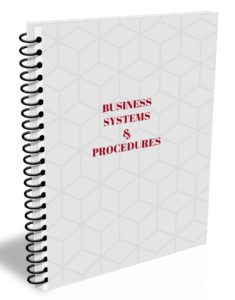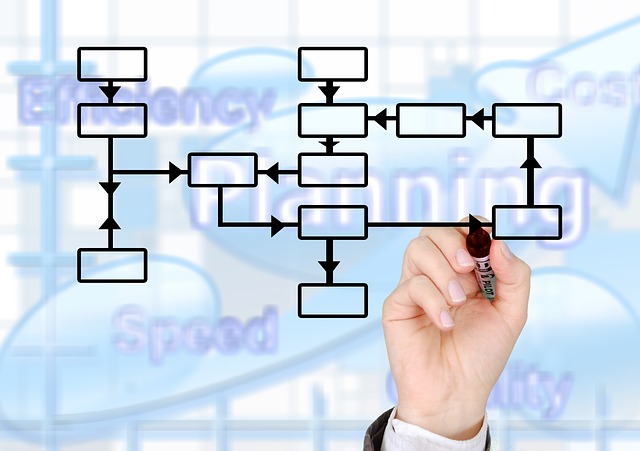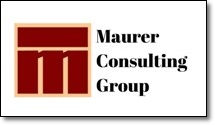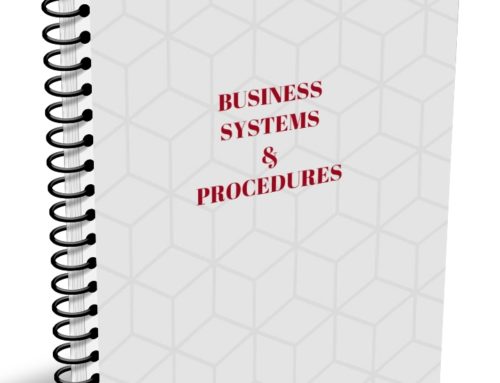Business Systems and Processes: What are they?
 Business systems are series of processes and procedures, broken into steps that dictate how a part of your company operates. Routine operations based on a number of systems allow your business to run without you being there all the time. The business can run – and exist – when you have to be elsewhere. A documented series of business systems and processes is sometimes referred to as an Operations Manual. The manual represents an effort to collect in one place the ‘know how’ of how your small business operates successfully.
Business systems are series of processes and procedures, broken into steps that dictate how a part of your company operates. Routine operations based on a number of systems allow your business to run without you being there all the time. The business can run – and exist – when you have to be elsewhere. A documented series of business systems and processes is sometimes referred to as an Operations Manual. The manual represents an effort to collect in one place the ‘know how’ of how your small business operates successfully.
Small business systems and processes are important assets. They add value to your company by adding a level of standardization. Each step of a system or process is listed in detail and documented. Once a system is implemented, it requires little thought and minimal effort to maintain. By breaking down each process into its individual steps more than one person can operate the processes in the same way. It becomes easier to spot inefficiencies and areas that may need revision. As the company grows, new systems, or just steps within a system, require review and adjustment. Changes in technology or adding new target audiences are examples of why you might want to revise a system.
Why systems are needed for a small business?
Business systems are not just something for big companies. They are necessary for any business, regardless of size, that plans to grow. Question: do you know when you need to implement business systems? Answer: as soon as you realize you can no longer operate as a one or two person firm, the need for systems kicks in.
Each step of every process necessary to operate your business needs to happen in the same way, every time. Systems assure consistency, improve efficiency and productivity of your staff. Systems are the basis of quality control –each business task is done the same way every time. Whether a new employee is hired, a sale made or a product built, a system is involved.

Benefits of systems and processes
What systems does your small business need?
- Accounting/ Bookkeeping/Financial: Perhaps the most important system of them all: how and when to pay your employees – and yourself? Billing, accounts receivable, accounts payable, payroll, all involve processes. An accounting system ensures accurate and timely invoices that go out to customers. Detail how payments will be logged in to your system. Detail the follow up steps to assure payments arrive in a timely manner.
- Paper Flow: Identify all forms and paperwork necessary for all business operation phases. What do the forms look like? When and how will each business form come into use?
- Production: If your firm produces actual products or provides abstract services, systems are important. How does your manufacturing operation function? What process does your firm use for the service products you offer customers?
- Marketing: How you attract, engage, convert potential customers into buyers. Ask yourself: Who will create marketing content, when and how? Further, consider what marketing channels and campaigns you use at each step. And, who is in charge of these systems?
- Sales: Include all phases of your sales process: identify target audiences, how and where to reach ideal customers, sales pitches and presentations, the sales transaction, processing sales paperwork, entering sale into production.
- Delivery: How documents, services and packages reach customers. How products and services are reach customers at different points in the sales transaction process.
- Customer Care: Includes your customer on-boarding system, customer treatment and service processes for situations occurring before, during and following a sale.
 Human Resources: Recruitment, hiring, retention and firing processes for bringing in new employees. Necessary record keeping, maintenance and tracking. Employment policies, compensation and benefit packages. Compliance with regulations set by local, state or federal government agencies.
Human Resources: Recruitment, hiring, retention and firing processes for bringing in new employees. Necessary record keeping, maintenance and tracking. Employment policies, compensation and benefit packages. Compliance with regulations set by local, state or federal government agencies.- Employee on-boarding: Once you hire a new employee, what steps are necessary to make them part of your team quickly? Is training part of introducing the employee to your company and how it does business? If so, detail what training is necessary, how and when to deliver it to the employee. If an employee policy manual is available, detail when and how it is introduced to new team members. Include job description details and who a new employee will report to.
How to set up Systems for your Small Business
OK, great, you get it. Detailed systems and procedures are important if you want to grow your business productively and efficiently. But, that nagging question always comes to mind: “Where do we begin?” The good news is, you don’t have to accomplish all of this in one day or one sitting.
- Start with the list of systems we included above. Are there others you feel are important to your industry or your business model? Can you ignore some on our list, or maybe add others?
- Prioritize your list. What do you hate to do in operating your business? Pass those tasks off to others. Place the most critical systems at the top of your list. Thinking how wonderful it would be to not have to do them anymore is a good motivator.
- Another way to rank your systems is by the amount of time you could save by passing them on to others. The ones that take up the most of your time should receive higher rankings.
- Evaluate tasks based on their impact on customers to decide priority ranking. Customers mean sales and sales mean revenue, and your ability to pay bills and employees. Customers are very important to success.
- Break down each process or procedure into steps to take staff from beginning to end of the task. Think of your list as ‘titles’ for your operational manual. Now, the just need fleshed out to clearly explain the process to new employees. Remember: you are setting the company standard. Everyone that takes on this task will use specific steps to achieve the same result, and level of quality, every time.
Additional benefits of business systems and processes:
Besides improving efficiency and productivity, systems of standardization provide other benefits. If you plan to sell the business, standardized systems add value. Documented systems and procedures assure operations and quality remain the same for all customers. Remember, satisfied customers come back time and time again. And, they tell friends and colleagues about their positive experiences. If necessary, after the business changes hands, the new owner’s staff can pick up where your people left off.
 Don’t forget, business systems provide freedom. They provide freedom to leave your office without having to not worry that your business will fall apart. Freedom also lets you explore opportunities, new tools, new vendors and other areas that will help the business grow.
Don’t forget, business systems provide freedom. They provide freedom to leave your office without having to not worry that your business will fall apart. Freedom also lets you explore opportunities, new tools, new vendors and other areas that will help the business grow.
Don’t Wait – Prepare Systems and Processes Now!
Experience the joy of spending time ON your business, not just working IN your business. Start systematizing your firm today to be ready for sustainable growth tomorrow. There is no better time than the present to prepare for your growth journey and the future. Be ready when you need to hire staff to share the workload. Unfortunately, the need to add staff usually happens quickly. Don’t wait until some ‘light bulb’ moment hits you to document your firm’s systems and processes. Prepare ahead of time. Give yourself a break. Hand off time consuming or unlikable tasks to someone else right away. If this seems like an overwhelming task and you need help, I’m here to help.





